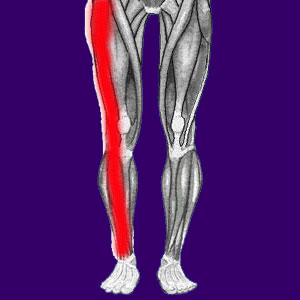
Sciatica pain is a tormenting expression unto itself, but is also typically associated with many other varieties of chronic back problems. The sciatic nerve is composed of 5 sets of nerve roots from the lumbar and sacral spinal regions. Often times, there is a structural issue or nonstructural process which affects the viability of one or more of these nerve roots before they go on to create the sciatic nerve. This concern may be actual physical compression of one or more nerve roots or may involve other affective processes, such as blood or oxygen deprivation of the nerve fibers. Regardless of why the nerve roots are affected, pain is just one of the consequences to the victim.
In other cases, pseudo-sciatica exists instead of true spinally-motivated symptoms. This means that the pain is caused by some process or compression of the sciatic nerve itself, once it is fully formed. Piriformis muscle compression of the sciatic is the most widely used theory to explain these types of pain syndromes, although regional processes, such as disease, infection or ischemia can still be the underlying culprit.
Sciatica is characterized by several usual symptoms. The most common is pain starting in the lower back and radiating down one or both legs. There may also be associated neurological symptoms, such as tingling, weakness or numbness. However, every case is unique and patients may demonstrate individualized symptomatic expressions which may follow or defy general diagnostic guidelines.
This dissertation is dedicated to soothing patients who suffer the daily ravages of sciatica nerve pain in the back, buttocks, legs or feet.
Sciatica Pain Causes
Sciatica is perhaps the most common form of lower back trouble. Sciatica affects each patient differently. Some patients have pain primarily in their lower back and buttocks. Other patients have pain in the upper legs or knees. Some patients experience the worst symptoms in their calves, ankles or feet. Sciatica pain can be in the front, rear, or sides of the leg. There may be no pain in the lower back region at all or chronic misery. Pain may be static or variable. Patterns may remain constant or may range to some extent or wildly. Symptoms often change illogically, commence for no particular reason and defy all treatment.
The reason for this diversity of symptoms is due to the type and location of the nerve tissue that is being affected by the condition. Spinal nerve roots exit the spine throughout the lumbar spinal region. Depending on where the condition affects the nerve roots, will determine the specific symptoms experienced by the patient. Remember also that some upper back and even cervical spinal stenosis issues can cause sciatica symptoms, as well.
Sciatica Pain Ordeal
The actual discomfort from sciatica can take many forms. Some patients describe radiating pain out of a central source in the low back or buttocks. The majority of patients detail their pain to be of the shooting variety, typically down the back or sides of one or both legs.
A great many patients have burning sensations in the buttocks, thighs or calves, usually concentrated in major muscle groups. Neurological symptoms might also be commonly linked to pain, such as in pins and needles which feel like actual pin pricks.
While the diversity of possible expressions seems endless, there is one thing they all have in common: Sciatica suffering is terrible and enacts both physical and emotional effects upon its victims, often for a very, very long time.
Ischemic Sciatic Nerve Pain
Nerves are easily affected by oxygen deprivation. Many cases of sciatica are severe, yet there is no obvious physical reason for the symptoms, or a coincidental mild to moderate structural issue which is not deemed causative. Being that the oxygen reduction is usually purposefully enacted as part of a larger subconscious defense mechanism, medical treatment usually has no lasting benefits for these types of syndromes. It is vital to see past the distraction of the physical symptoms and look to the underlying emotional reasons why the pain is being generated. This is the way to find relief from all forms of psychogenic sciatica.
Since most doctors are not trained to recognize mindbody conditions, patients have little hope of achieving an accurate diagnosis or effective treatment. This is the sad process which is well detailed in the various literary works of Dr. John Sarno and other physicians who actively treat tension myoneural syndrome, usually with very good results.
Sciatica Pain Factsheet
Almost any spinal condition in the lower back can cause sciatic nerve pain. In fact, many spinal issues in any area of the vertebral column can also create these same types of sufferings. However, it is rare that these conditions will produce chronic pain that will last and last despite active care.
Sciatica is one of those terrible dorsalgia conditions that plague many patients for their entire lives, myself being included in this sample. If your pain continues despite treatment, make your doctor accountable. Ask them why you can not find a cure, despite their best efforts. Demand answers that make sense.
If they can not explain themselves, then consider getting a new evaluation by a different doctor. In the meantime, get more involved with research and learn why so many sciatica cases are misdiagnosed. This knowledge will help put you on the right path towards relief instead of forcing you to walk in circles, getting nowhere year after year.





